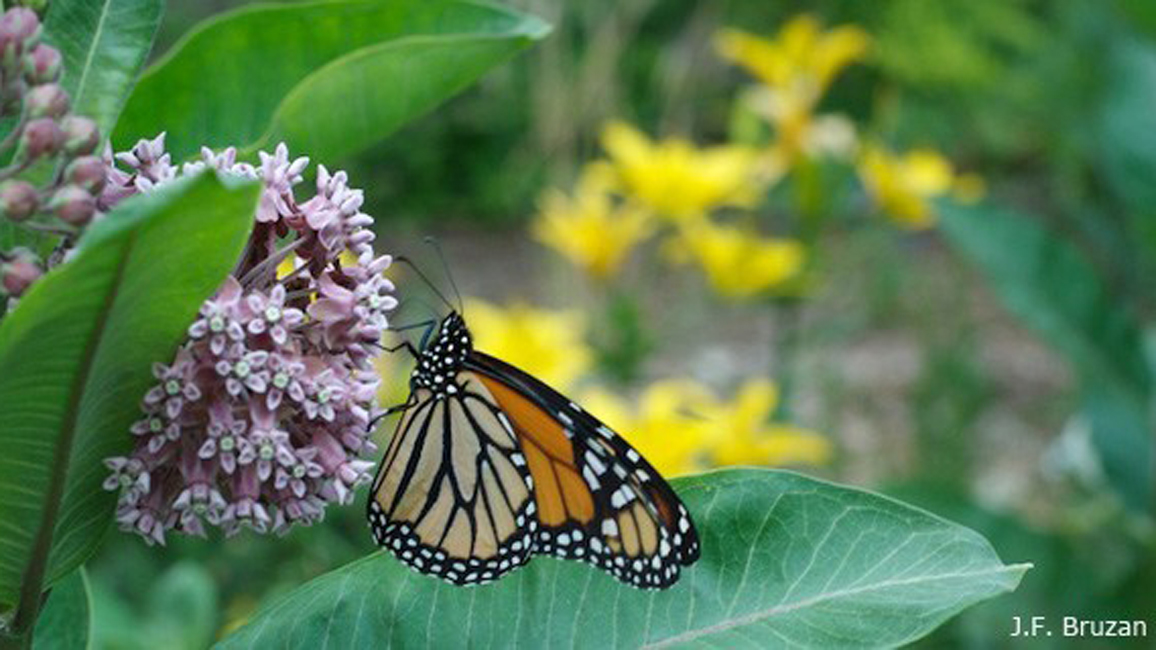
Did you know March 14 is “Learn About Butterflies Day”? Celebrate by learning how to create a butterfly garden: a place where butterflies will love to flutter to! It takes just a few things to make one in your yard! (No yard? How about a balcony, a window box, or your school grounds?)
What You Need
- fruit
- shallow pan
- plants/flowers (See below for recommendations.)
- a few rocks
- sugar, molasses, corn syrup, or honey
What You Do
-
- Get Nectar Flowers
- Butterflies love nectar-producing flowers, especially those with red, yellow, orange, pink, or purple blossoms. They also prefer flowers that are flat-topped or that grow in clusters. Some flowers that fit the bill (or should we say proboscis?) include: asters, azaleas, black-eyed Susan, blazing stars, butterfly weed, cardinal flower, coreopsis, goldenrod, ironweed, milkweed, phlox, purple coneflowers, and sunflowers.
- Choose a variety of plants that bloom at different times. That will keep your butterfly café open through spring, summer, and early fall.
- Plant Your Flowers
Plant your flowers in a sunny spot that’s also sheltered from the wind. Group plants so that lots of flowers grow close together. - Provide Water and Warmth
- Fill a shallow pan with wet sand or mud and place it in a sunny area. Butterflies may land here to collect minerals as they sip.
- Add a few rocks to give butterflies a place to rest and warm up in the sun.
- Make a Fruity Mash
If you can’t plant butterfly-attracting flowers, you can still bring butterflies to you by making a fruity mash that butterflies and moths can’t resist. Mash any fruit with a sugar source (sugar, molasses, corn syrup, or honey) and let it sit for a few hours, then smear your mash on a surface in your yard that can be hosed off later. It’s best to put your mash in a semi-sunny area so it won’t dry out as quickly. - Observe the Butterflies
Try to answer the following questions:- Which flowers are most popular? Check out whether certain kinds of butterflies seem to prefer visiting certain flowers.
- Do the butterflies’ colors blend in or stand out? Are they more camouflaged with their wings open or closed?
- Can you identify the butterflies you spot? Note their size and shape, the colors and patterns on their wings, and how they fly. Then use a field guide to search for their names.
- Can you get close enough to watch a butterfly’s long tongue unroll? You can use a magnifying glass to see the tiny scales that cover its wings.
Pledge to help monarchs! Click here for more information.
- Get Nectar Flowers


